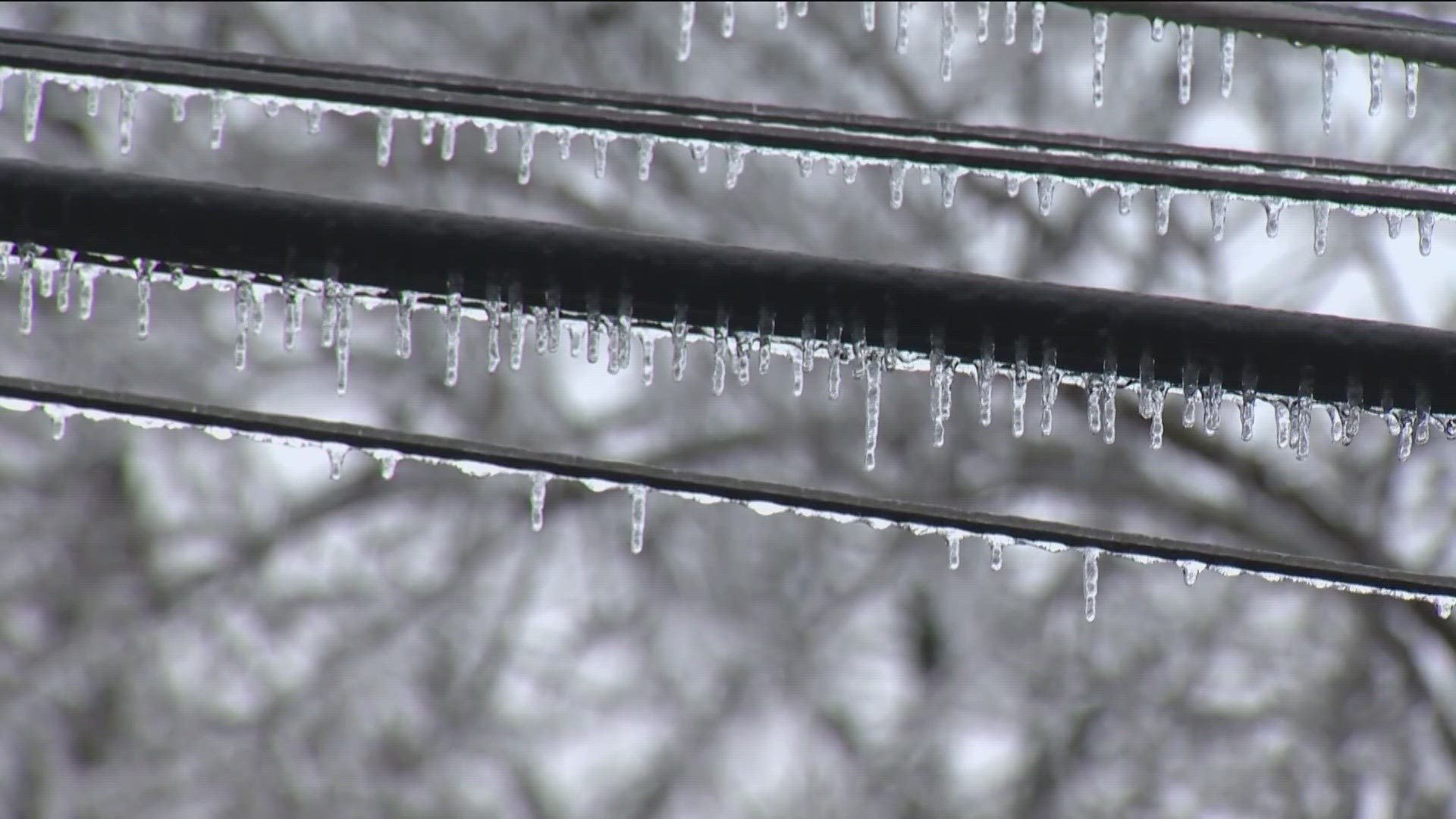AUSTIN, Texas — In January and February, the ice storm that hit Central Texas, named Winter Storm Mara, caused extensive damage.
The storm left more than 174,000 Austin Energy customers without power, with many of the outages lasting for weeks due to extensively damaged powerlines.
Earlier this week, the Austin City Council allocated $1 million to go toward a study that will analyze the viability of Austin Energy moving more powerlines underground.
“It was something that has been a priority for the utility for some time, and it takes on a greater sense of urgency after Mara. It just does,” said Matt Mitchell, Austin Energy's public information officer.
Currently, 57% of Austin Energy’s power lines are underground. This study aims to look at the existing 5,000 miles of line above ground to see where it may be economically and environmentally safe to do so.
“There's no one size fits all,” Mitchell said. “When you've got an infrastructure that is as broad as ours, you really need to take a targeted look at each and every place where it would be feasible to do so.”
The study will look at different soil types, terrains, the location of lines to homes and other power lines. Dr. Michael Webber, an energy resource professor at the University of Texas at Austin, said the study will be important since not every area is suitable for an underground line system.
"It only makes sense to [add] underground lines in areas where you have enough meter density, enough consumers in the area, you have risks from trees and falling limbs, and ice storms and windstorms, and the soil or ground isn't too hard,” Webber said.
Mitchell said underground lines are more difficult to fix since crews would have to dig up the area. However, Webber also noted that underground lines tend to fail less frequently.
“They're more resilient because they're not exposed to the aboveground elements. That being said, when we have an outage that is underground, it takes longer to repair because it's not as easy as finding wherever that fault was, wherever that equipment failure was,” Mitchell said.
The other factor to study is the cost. Austin Energy said putting just one mile of power lines underground can cost anywhere from $3 to $5 million.
“So, we think about 5,000 miles of lines and millions of dollars per mile, we're talking about many billions of dollars in a couple of decades,” Webber said.
Austin Energy said when it gets the results back from the study, it won’t be doing it all at once.
“It would be very much a very first part of an ongoing strategy and a multiyear, multi-decade program, if that is what the city council decides,” Mitchell said.
Webber said overall, it will be a beneficial long-term investment for the city.
“The underground lines are more expensive upfront but cheaper in the long run, especially if you consider their reliability, and how they are more beautiful and therefore they help keep our property values higher,” Webber said.
Austin Energy is currently deciding on an engineering firm to conduct the study, but it said once it does, it expects the study to start right away.
Austin Energy expects to have results by 2024.

